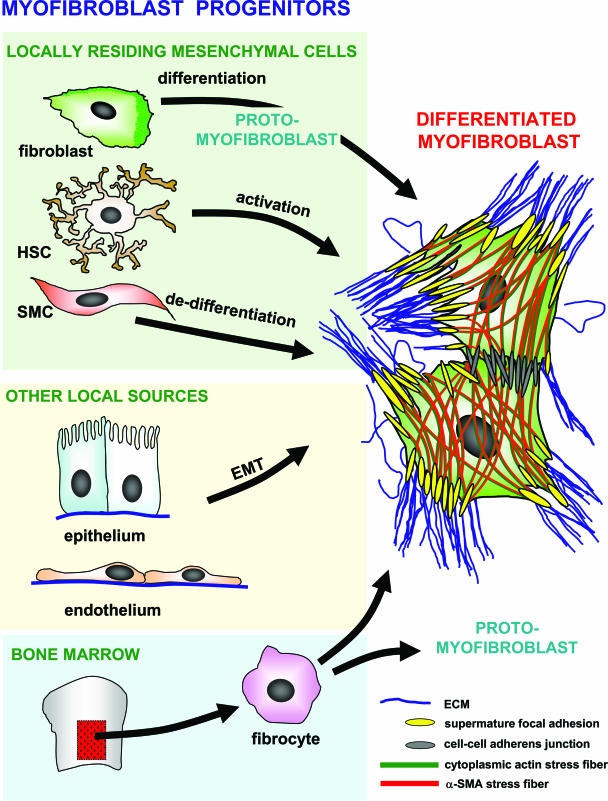Figure 2.
One cell, multiple origins. Differentiated myofibroblasts are characterized by increased production of ECM proteins and by the development of α-SMA-positive stress fibers that are connected with the ECM at sites of supermature FAs and between cells via adherens junctions. The main myofibroblast progenitor after injury of different tissues seems to be the locally residing fibroblast, which transiently differentiates into a protomyofibroblast, characterized by α-SMA-negative stress fibers. In the liver, myofibroblasts are additionally recruited from HSCs that follow an activation process and from epithelial cells that undergo EMT. In the lung, endothelial-to-mesenchymal transition may provide another mechanism to generate myofibroblasts. During atheromatous plaque formation, de-differentiating SMCs (ie, that lose late SMC markers) from the media are suggested to be the major source of myofibroblastic cells. The relative contribution of BM-derived circulating fibrocytes to the formation of differentiated myofibroblasts in different fibrotic lesions is unclear at present; it is conceivable that fibrocyte transdifferentiation terminates at the protomyofibroblast stage.

